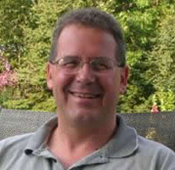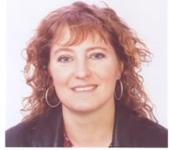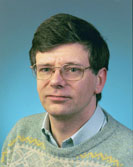Instructors
In alphabetical order...
 Mike Hinds <hinds@mint.ca>
Mike Hinds <hinds@mint.ca>
He received his Ph.D. in Analytical Chemistry from the University of Saskatchewan (Saskatoon, Canada) in 1988. In the same year, he joined the Royal Canadian Mint as an Assay Chemist. Mike implemented many new methods using a variety of spectrometric techniques to analyse a range of precious andnon-precious metal samples. He has been developing methods using XRF spectrometry since 1999. His expertise also includes mass measurement and dimensional metrology. His duties include acting as consultant for both Ottawa and Winnipeg facilities for solving measurement problems and spectrometer purchases. He continues to be involved with the fabrication and characterization of all manner of in-house standards and reference materials for precious metal analysis.
Professional Activities
- Published papers in refereed journals: 39
- Contribution to published books: 5
- Invited conference presentations: 31
- President Spectroscopy Society of Canada 1997 – 2001
- Editorial Board Member Atomic Spectrometry Updates, Journal of Analytical Atomic Spectrometry since 1996
- Involved with UWO XRF Short Course since 2005
- Chair of Reference Material Project Steering Committee for London Bullion Marketing Association
 Maggi Loubser <Maggi.Loubser@ppc.co.za>
Maggi Loubser <Maggi.Loubser@ppc.co.za>
Her career in X-Ray fluorescence Spectroscopy started as a laboratory technician at the Atomic Energy Corporation of South Africa in 1988. There she learned XRF in a process control laboratory. When South Africa signed the nuclear non-proliferation agreement, she was seconded to the International Atomic Energy Agency for six months to help with the auditing and sampling of all nuclear materials at the AEC. Thereafter she joined the Research and Development section in Analytical Chemistry where she also gained experience in ICP, AA, MS, Spectrophotometry, GC and HPLC and spent a six-month stint in the water laboratories. After threatening to drown herself in the submitted samples, she was transferred back to R&D and became part of a team doing environmental impact studies for industry. During this time she was part of a sampling team where different impact studies were planned and executed from fieldwork to analysis and reporting. During this time she studied part-time towards a BSc in Chemistry, which she obtained in 1996 from the University of South Africa (UNISA), and a BSc(hons) in 2003 from University of Pretoria. Currently she is busy with an MSc in Chemistry with a dissertation entitled: An Investigation into the reactions occurring during the preparation of a lithium borate glass bead for the purpose of XRF/ICP sample preparation.
In 1994 she joined the Geology department of the University of Pretoria (UP). Over the past thirteen years the X-Ray laboratory was build up to a state of the art facility with a Thermo Electron ARL9400XP+ XRF spectrometer. The facility routinely do all the quantitative XRF work for the Geology, Metallurgical Engineering, Chemistry, Applied Materials and Civil Engineering departments, amongst others. They also have numerous commercial clients for whom both routine quantitative analysis as well as development work is executed. The facility also has a Siemens D500 XRD, a Panalytical X’Pert PRO diffractometer with temperature stage and texture analyser attachments, as well as a CAMECA SX 100 Electron Probe Micro Analyser.
She does all Thermo Fisher Scientific South Africa’s XRF training for them, and also help with setting up spectrometers and developing analytical routines for their customers.
Together with Dr. Sabine Verryn, an XRD specialist, they have been presenting an introductory course to XRF and XRD to Geology honours students since 1998. Since 2000 this course was presented as a one week, introductory course to industry as part of the University’s Continued Education programme. Since 2007 the introductory XRF course has been extended to a full one-week course and from 2008 a second intermediary course will be presented too. In 2005 Maggi was invited to co-present the annual XRF Short Course at UWO and was subsequently appointed to continue presenting the annual XRF Short Course since 2006.
During 2004, she developed a course in Sampling and Sample preparation for the ferromanganese industry and has presented this twice in the BPH Billiton group. Over the years numerous students received training in XRF and supervision for the analytical component of their honours and MSc projects. In 2003, the Tshwane University of Technology accredited the facility as a training centre, and National diploma and BTech students, do their internship on an annual basis. She teaches XRF courses to Metallurgical Engineering and Materials Science third year, and MSc students, Geology honours students, as well as some single lectures to the undergraduates. Currently the facility is introducing a internship programme where freshly graduated students will spend an industry sponsored year in the facility, applying their theoretical knowledge and learning the ropes in a real analytical laboratory before commencing employment in industry. She joined PPC Cement in November, 2008.
- author/co-author of 7 peer-reviewed papers in chemistry journals,
- presenter of 14 short courses in XRF and Sampling and Sample Preparation between 1998 and 2007,
- invited speaker at 14th Norwegian X-ray Symposium, Kristiansand, Norway, September 2006,
- Invited speaker at AXAA 2008, Melbourne, Australia,
- member: International Association for Geoanalysts since 1998, on the executive since 2006,
- Member: South African Chemical Institute since 1998
- Executive: South African Spectroscopic Society 1997
- Member of advisory board, Elements Magazine since 2007
- Vice chair, organizing committee, CSIXXXII 2001
- Organizing committee, Analytica 2006
- Organizing committee, Geoanalysis 2009
Alexander Seyfarth
<alexander.seyfarth@bruker-axs.com>
Alexander Seyfarth is an x-ray spectroscopist with over 15 years of experience with XRF and XRD. Alexander holds a Masters degree in Mineralogy from University Giessen (1996). Thesis work for his graduate studies were done on chemical and phase investigation of kiln deposits using XRF, EPMA and XRD as well as structure refinement on isolated phases. Widely traveled within Europe and the Americas, he has worked onsite to install, commission and calibrate systems ranging from Semiconductor and Cement to Mining sites.
Training users has been part of his professional career from PC training in the early 80s to XRF in more recent years. Since 1990 he has been using XRD and XRF techniques and instrumentation as part of the research and teaching of assistants at the University Giessen. Starting in the early eighties he advanced as a computer buff from a ZX81 to PC’s, running a PC-based consulting and services business on the side from 1986.
From the 1996 Freelance and Contract work for ceramic and cement companies within Germany, he moved in January 1997 as Application Scientist XRD and XRF to SIEMENS AXS in Karlsruhe. In December 1998 he transferred to Madison, WI as Application Scientist XRF, XRD. A vertical move brought him in 2003 from Senior Application Scientist XRF and Product Support XRF to Customer Service. Since 2006 he has been the Product Manager, Elemental and Process Analysis and Application Labs Manager living in Madison.
Having changed wavelength for a 1-year intermission with an IR spectroscopy startup company, he was able to also gain experience in the product development and production ramp-up of emission analyzers based on the patented EP-IR technology. Since 2004 he has been involved with The University of Western Ontario XRF Short Course.
His main focus is the combination of XRF with XRD and IR to enhance the application capabilities and create smarter instrumentation. He is the proud father of a 4-year-old future mermaid princess scientist.
 Bruno Vrebos <bruno.vrebos@panalytical.com>
Bruno Vrebos <bruno.vrebos@panalytical.com>
Dr. Bruno Vrebros is currently a senior scientist for X-ray fluorescence at PANalytical in the Netherlands. He obtained his degree in Metallurgy and Materials Engineering at the Katholieke Universiteit Leuven in 1981 and his Doctorate in engineering at the same university in 1986. At PANalytical he is involved in the development of hardware and software for X-ray fluorescence spectrometers. He is also on the Advisory Board of X-Ray spectrometry. He begins instructing UWO XRF course since 2007.
Professor James Willis was an analytical scientist and environmental geochemist at the University of Cape Town, the Department of Geochemistry and later the Department of Geological Sciences from 1961-2000. Ha was appointed to Professor Emeritus at UCT in 2000. He has experience in many analytical techniques, but specialized in XRF spectrometry applied in geological and environmental samples, including lunar and terrestrial rocks and soils, sediments, coal and fly ash. Professor Willis was President of the South African Spectroscopic Society from 1986 to 1999. He received the S.A. Spectroscopic Society’s ARLABS Gold Medal in 1986; a Geological Society of South Africa’s Honours Award for contributions to analytical geochemistry in 1992, and the Denver X-ray Conference Birks Award in 1994. James taught XRF courses at UCT since 1974 and at UWO from 1990 to 2005. Presently he works as an XRF consultant.
Gerry R. Lachance, Emeritus
Gerry began using XRF as an analytical technique in the mid 1950s. There being no textbook relating to XRF analysis, it was ‘sink or swim on your own’. In 1966, with R.J. Trail as coauthor, he published an equation which was dubbed by others the ‘L-T Equation’. Gerry continued to adapt to the many advancements made subsequently, both instrumental and theoretical, in XRF spectrometry. Gerry retired from active employment in 1989. In 1995, he published, with F. Claisse as coauthor, a textbook on the Theory and Application of X-ray Fluorescence Spectrometry – ‘Quantitative XRF Analysis’. Gerry taught UWO XRF course from 1996 to 2002.
Charles Wu <ctwu@uwo.ca>
Dr. Wu's experience with x-ray fluorescence spectrometry began in the early 80's while working towards the completion of his doctoral thesis. Having been conferred a PhD in Geology from The University of Western Ontario in 1984, he lectured for several years in the topics of optical mineralogy, metamorphic petrology, and igneous geochemistry. In 1988, he accepted a position as Lab Manager and Research Scientist running the Earth Sciences Department's Analytical Geochemistry Laboratory. Recently, in 2007, he was appointed to manage the Earth Sciences Module of the UWO's Biotron Experimental Climate Change Research Institute.
He has extensive experience in instrumental analysis in the use of XRF, AA, INAA, ICP-AES, and IC. Since 1990, Dr. Wu has organized the UWO XRF Course that has trained and educated hundreds.
Also from this web page:
Registration
XRF2011 Short Course
Sample Prep Workshop
Portable XRF Analyzer Workshop
Contact
Course Coordinator:
Charles Wu (ctwu@uwo.ca)


